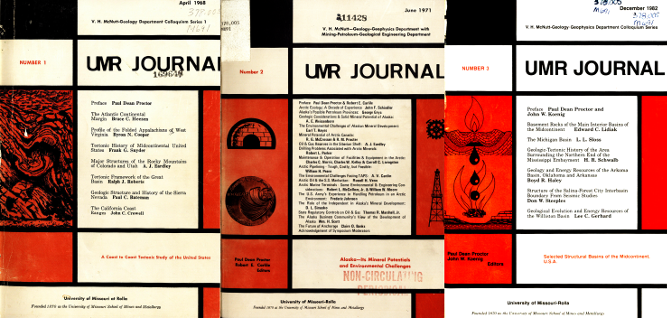UMR Journal -- V. H. McNutt Colloquium Series

Publication Date
01 Dec 1982
Abstract
The Williston basin of North Dakota, Montana, South Dakota, and south-central Canada (Manitoba and Saskatchewan) is a major producer of oil and gas, lignite, and potash. Located on the western periphery of the Phanerozoic North American craton, the Williston basin has undergone only relatively mild tectonic distortion during Phanerozoic time. This distortion is largely related to movement of Precambrian basement blocks.
Sedimentary rocks of cratonic sequences Sauk through Tejas are present in the basin. Sauk, Tippecanoe, and Kaskaskia Sequence rocks are largely carbonate, as are the major oil and gas producing formations. Absaroka and Zuni rocks have more clastic content, but carbonates are locally important. Clastics of the Zuni Sequence (Fort Union Group) contain abundant lignite. Tejas Sequence rocks are not significant in the production of minerals and energy, although glacial sediments cover much of the region.
Oil exploration and development in the United States portion of the Williston basin in the time period 1972 to present has given impetus to restudy of basin evolution and geologic controls for energy resource locations. In consequence, oil production in North Dakota, for instance, has jumped from a nadir 19.5 million barrels in 1974 (compared to previous zenith of 27 million in 1966) to 32 million barrels in 1979 and 40 million barrels in 1980. Geologic knowledge of carbonate reservoirs has expanded accordingly.
Depositional environments throughout Sauk, Tippecanoe, and Kaskaskia time were largely shallow marine. Subtidal and even basinal environments were developed in the basin’s center, but sebkha deposits were abundant near the basin’s periphery. Evidence of subaerial weathering was commonly preserved in structurally high areas and on the basin’s periphery, especially in late Kaskaskia rocks. Some pinnacle reefs were developed in Kaskaskia time, morphologically similar to the Silurian pinnacle reefs of the Michigan basin.
Clastic sediments were transported into the southern (U.S.) part of the basin during Absaroka time, a product of erosion of ancestral Rocky Mountain orogenic structures. Continental and shallow marine clastic sediments were deposited until deeper Cretaceous marine environments were established. Laramide orogenesis to the west provided detritus that was deposited in fluvial, deltaic, and marginal marine environments, regressing to the east. Major lignite deposits are part of this post-orogenic regressive rock body.
Major structures in the basin have ancient histories, many of them probably pre-Phanerozoic in origin. Reversals of structural movement on faults occur during Paleozoic events. Meteorite impact structures have been hypothesized in the basin, and some early Saukian structural complexity is seen.
A rapidly accumulating computerized data base in the North Dakota part of the basin is serving to establish the Williston basin as a model for study of cratonic basin structural grain and evolution.
Document Version
Final Version
File Type
text
Language(s)
English
Rights
© 1982 University of Missouri--Rolla, All rights reserved.
First Page
83
Last Page
120
Recommended Citation
Gerhard, Lee C.
(1982)
"Geological Evolution and Energy Resources of the Williston Basin,"
UMR Journal -- V. H. McNutt Colloquium Series: Vol. 3, Article 8.
Available at:
https://scholarsmine.mst.edu/umr-journal/vol3/iss1/8


